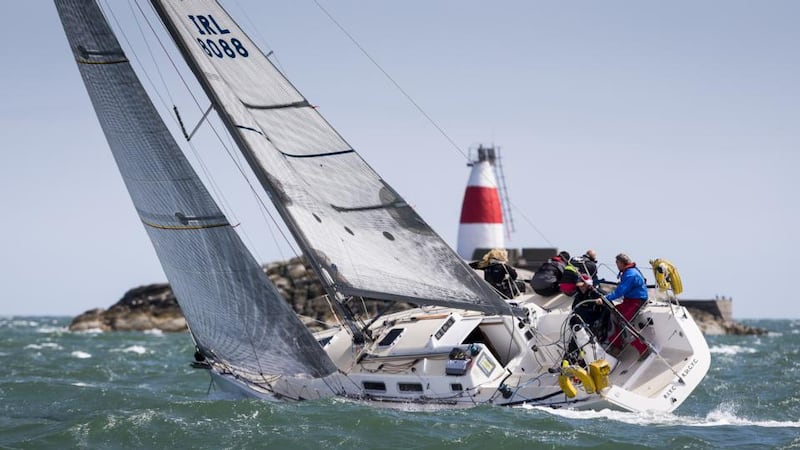The 409-strong fleet in the Volvo Dún Laoghaire Regatta sailed out on Dublin Bay yesterday, but only one boat will eventually emerge overall winner on Sunday afternoon when the 29 classes are decided.
One, however, already stands out from the crowd as a significant part of not just Irish sailing history but as a world first of her time. Spotting the Huff of Arklow might be a challenge in 2015, some 65 years after her debut in yacht racing, but if a modern-era America's Cup 45-footer were to appear this week, riding above the waves on foils at high speed, it would have the same significance as the blue-hulled sloop gracing the bay in this event.
Named after Douglas Heard, of the Royal St George Yacht Club, in Dún Laoghaire and her designer, Uffa Fox, the prolific Cowes-based naval architect, the Huff turned heads in 1950 and was even mentioned in this newspaper's Irishman's Diary column.

Heard was a committed dinghy sailor and raced international 14-footers; Fox was the leading designer responsible for developing the first planing dinghy. They had a series of boats that were all named by a conflation of their names.
Unheard-of feat
The pair concocted the idea of finding a way to develop an ocean-racing keelboat that could achieve planing speeds, a feat unheard of in a world dominated by heavy Bristol Pilot-type pilot-cutters typified by
Jolie Brise
, which won the first Fastnet race in 1925.
Fox had developed a series of fast keelboats, including the Flying 15 (another class racing in Dún Laoghaire, with Waterford's Lee Statham winning the first race yesterday), and the plan was to scale the boat up to become a Flying 30, with features such as a masthead rig and light displacement hull that would deliver planing speeds unknown before then.
John Tyrell's yard in Arklow was commissioned to build the yacht, and his son Jimmy was on hand to welcome the Huff back to Dublin Bay on Wednesday this week, along with Bill Murray, who had worked on the original build and Ruth Delany, Heard's widow, who sailed extensively on the boat.
After the boat was launched, she soon made headlines as she was recorded sailing downwind at 19 knots. She later achieved a top speed of 23 knots and won the Irish Cruising Club’s Faulkner Cup for a trip to Iceland in 1960.
In more recent times, significant developments in boat design haven't all been as well received, notably the arrival of canting-keeled boats into mainstream yacht racing. The Cookson 50-footer was one such boat that faced stiff opposition 10 years ago yet one of these boats, Adrian Lee's Lee Overlay Partners is racing in Class Zero this week.
Although Fox has been described as a "non-conformist" the success of his earlier work earned a welcome for the revolutionary Huff of Arklow.
Past crew welcome
The
Huff
is racing in cruiser class three this week, placing 11th on Echo handicap yesterday, and is welcoming past crew members to visit at her berth alongside Royal St George Yacht Club.
Meanwhile, the opening shots in the four-day series for the remainder of the fleet took place in brisk conditions yesterday. Southerly winds gusting to force six at times brought challenges for competitors and race management alike.
No fewer than 17 protests had been received last night, while a number of crew members received medical attention ashore, including a report of a dislocated shoulder.
A strong contingent of Scottish and English visitors are taking part, with GBR sail numbers dominating several key divisions among the 23 classes after yesterday’s late-afternoon opening race. The series continues this morning with up to three races today and tomorrow before Sunday’s finale.











